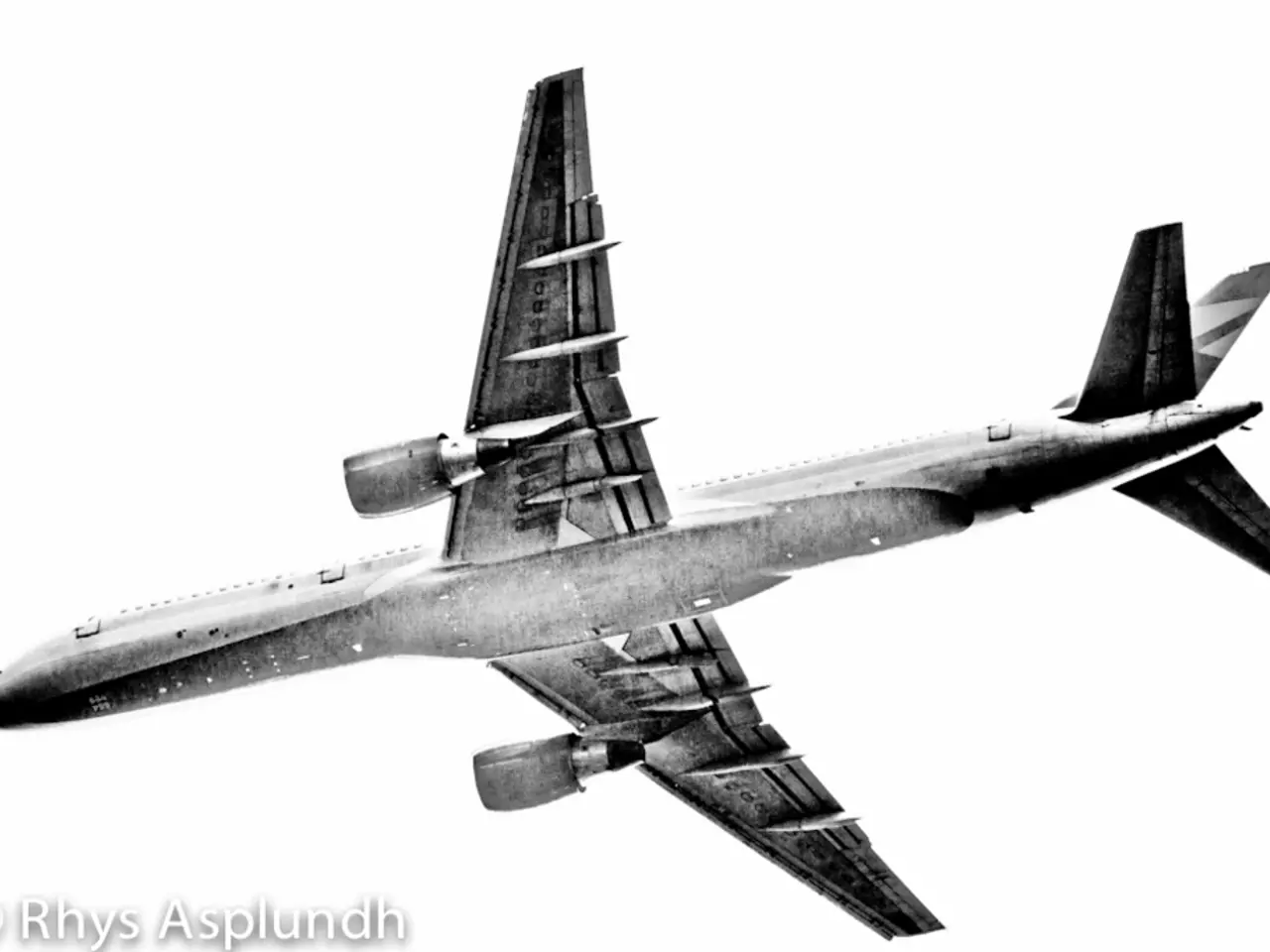Airborne Launch Vehicle Milestone: The A400M Successfully Passes Initial Tests as a Remote-Controlled Carrier for Future fighter jets
The Airbus A400M, a multi-role airlifter used by military forces worldwide, recently made history by successfully demonstrating an airborne deployment of a drone. This marks a significant step forward in the development of manned-unmanned teaming (MUM-T) technology.
During the test, the Airbus A400M, serving as a mothership or command node, deployed a drone from its opened rear cargo ramp door while airborne. The drone, a Airbus-built Do-DT25, acted as a surrogate Remote Carrier and was released over a test range in Northern Germany. Shortly after launch, the drone's parachute opened, delivering it safely to the ground.
The test involved the use of the Airbus product, the Modular Airborne Combat Cloud Services (MACCS), which enabled full connectivity between the A400M and the drone. This connectivity is crucial for real-time mission coordination and situational awareness.
The joint flight test crew for the A400M air-launch demonstration consisted of the German Air Force and Airbus personnel. Validating connectivity, human-machine interface, and the concept of teaming intelligence through mission group management are key steps towards using Remote Carriers as force multipliers within the Future Combat Air System (FCAS).
The A400M is being upgraded to include broadband connectivity, electronic warfare capabilities, and interfaces specifically for Remote Carrier deployment. This will enable it to operate alongside unmanned systems as part of the FCAS. The enhanced command and control systems will integrate with drones to provide real-time situational data and mission control, helping to make the FCAS more networked and capable in contested environments.
In the context of the FCAS, the A400M is tailored to function as a multi-domain carrier supporting both air and electronic warfare domains. Its role includes deploying, controlling, and coordinating Remote Carrier drones for intelligence, surveillance, electronic warfare, and strike roles. This allows manned crews aboard the A400M to extend their tactical reach and leverage unmanned assets for tasks like surveillance, electronic attack, or strike operations, forming a cohesive manned-unmanned team that improves mission flexibility and effectiveness.
The next flight test for the validation of the A400M as an airborne launch platform for Remote Carriers is planned to happen this year. Airbus plans to continue validating the A400M in this role, with the ability to deploy large numbers of these drones.
This successful demonstration of the A400M's airborne deployment capabilities for drones is a significant milestone in the development of MUM-T technology. It reflects a shift towards integrated autonomous-manned air combat architectures, paving the way for a more networked and capable Future Combat Air System.
The successful deployment of the Airbus-built Do-DT25 drone from the Airbus A400M during the test highlights the aircraft's potential in the aerospace industry and finance, as it marks a significant step towards the commercialization of MUM-T technology. This development, integrated within the Future Combat Air System (FCAS), showcases an intersection of finance, technology, and the defense sector, with the A400M's enhanced command and control systems offering increased networking and capabilities in contested environments.








